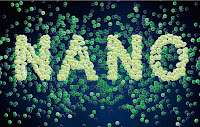Week II // Math and Art
Through the readings, I was able to clearly see how linked art and mathematics are. For example, in Flatland society and gender are represented by lines and segments. Women are line segments, but from another perspective you see the “woman” as as a dot. I think it’s interesting to consider the social innuendos the piece explores. It indicates that there is some sort of social hierarchy being presented, and that one level isn’t able to understand the social implications and struggles of another.
 Another aspect that really resonated with me was “The Fourth Dimension and Non-Euclidean Geometry in Modern Art.” I thought it was very interesting how the relationships of the different fields were explored. The 4th dimension that is introduced shows the connection between science and art. It describes that artists are interested in the invention of new aesthetics and other design concepts. In the same way, mathematicians are interested in the 4th dimension for it’s ability to help them solve theorems and equations. It was interesting to see how one concept could assist the two worlds that we discussed last week. Picasso, for example, is an example of how the two worlds collide to create something new. It accurately depicts the fact that the two worlds can effectively and efficiently collide to create something entirely special.
Another aspect that really resonated with me was “The Fourth Dimension and Non-Euclidean Geometry in Modern Art.” I thought it was very interesting how the relationships of the different fields were explored. The 4th dimension that is introduced shows the connection between science and art. It describes that artists are interested in the invention of new aesthetics and other design concepts. In the same way, mathematicians are interested in the 4th dimension for it’s ability to help them solve theorems and equations. It was interesting to see how one concept could assist the two worlds that we discussed last week. Picasso, for example, is an example of how the two worlds collide to create something new. It accurately depicts the fact that the two worlds can effectively and efficiently collide to create something entirely special.
B. Sidney , Smith,. "The Mathematical Art of M.C. Escher." The Mathematical Art of M.C. Escher. N.p., n.d. Web. 27 Apr. 2017.
Gary , Meisner. "Golden Ratio in Art Composition and Design." Goldennumber.net. N.p., 4 May 2014. Web. 27 Apr. 2017.
Macdonald, Fiona. "BBC - Culture - The painter who entered the fourth dimension." BBC News. BBC, 11 May 2016. Web. 27 Apr. 2017.
Robert, Lang. "Robert J. Lang Origami." Robert J. Lang Origami. N.p., 2017. Web. 27 Apr. 2017.




Comments
Post a Comment